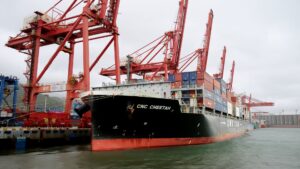Understanding the Current State of U.S. Tariffs and Their Economic Impact
At Extreme Investor Network, we strive to provide our readers with valuable insights into the ever-changing landscape of finance. Today, we’re diving into an important topic: the current state of U.S. tariffs and their implications for consumers and businesses alike.
Tariff Rates at Historical Highs
Recent data from the Yale Budget Lab highlights that the average effective tariff rate in the U.S. has climbed to 17.8%, a level not seen since 1934. This marks a significant shift from pre-2016 levels, showcasing an increase of 15.4 percentage points. The economic implications of these tariffs are profound, with estimates suggesting that the average American household could face an additional $2,800 in costs in the short term.
Why Tariffs Matter
Tariffs are essentially taxes imposed on imported goods, affecting the prices consumers pay. High tariff rates can lead to increased costs for everyday products. For example, the price of clothing, electronics, and even food could rise as importers pass on these costs to consumers.
Recent Trade Deals: China and the U.K.
In a bid to address these high tariffs, U.S. officials recently negotiated deals with China and the United Kingdom. The new agreement with China saw tariffs slashed to 30%—a dramatic decrease from rates that soared up to 145%. Meanwhile, for U.K. imports, 10% tariffs will remain in effect for specific goods, like automobiles, offering some relief.
However, while these deals are steps toward reducing costs, they may not significantly alter the overall tariff landscape. Experts caution that the primary driver behind the high tariffs has been the situation with China, and the deals struck with the U.K. have limited impact.
What This Means for Consumers
As consumers, our purchasing habits are likely to shift in response to these tariff changes. Economists predict that people may look for alternatives or delay purchases of imported goods – a trend we are already beginning to see.
For instance, let’s say you’ve been eyeing that electronic gadget made in China. With the price increases driven by tariffs, you might reconsider that purchase or opt for a domestically made option, even if it’s more expensive. This behavioral shift is expected to create a ripple effect throughout the economy, influencing how companies source and price their products.
The Future of Tariffs: An Uncertain Landscape
Looking ahead, transitions in consumer behavior could lead to an effective tariff rate of approximately 16.4%, which would still be among the highest levels recorded since 1937. However, the timing of these changes remains uncertain. Some adjustments may happen quickly, while others could take longer to materialize.
The Bigger Picture
At Extreme Investor Network, we believe informed decisions are critical. Understanding the implications of tariffs goes beyond immediate financial impact; it’s about grasping how these shifts can reshape markets and spending habits in the long term. While trade negotiations are ongoing and the landscape remains fluid, staying abreast of these developments is crucial for any investor or consumer.
We’ll continue to monitor the situation and provide updates, so you can make well-informed choices for your financial future. For deeper insights into market trends, tariffs, and their impact on investments, stay connected with us at Extreme Investor Network.

